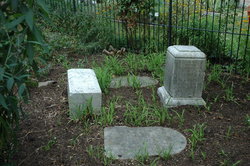Moses BALL Sr
SAR Patriot #:
P-107905
The following information was assembled from numerous sources and cannot be used directly as proof of Qualifying Service or Lineage.
It is considered a research aid and is intended to assist in locating sources that can be used as proof.
State of Service: VA
Qualifying Service: Patriotic Service
DAR #: A210367
Birth: 02 May 1717 / / VA
Death: 03 Sep 1792 / / VA
Qualifying Service Description:
Paid Supply Tax, 1783
Additional References:
- Fairfax Co, VA 1783 Tax List
- SAR Patriot Index Edition III (CD: PP2210, Progeny Publ, 2002) plus data to 2004
- DAR cites:
- Henning's Statutes, Volume 11, pg 112-129
- Lib. of VA, Fairfax Co. Personal Property Tax, 1782-1790, Roll 106
Spouse: Nancy Ann Brashear
Children: Moses Jr; George;
Members Who Share This Ancestor
| Date Approved | Society | ACN | SAR Member Info | Lineage via Child | View Application Detail | |
|---|---|---|---|---|---|---|
| 1977-06-23 | VA | Unassigned | Bob Miller Ball Jr. (113017) | George | ||
| 1998-10-29 | KS | 2259 | James Ellsworth Bond (138552) | George | ||
| 2008-06-26 | NM | 30612 | Charles David Harris (171945) | Moses | ||
| 2022-12-02 | PA | 102670 | Robert Vance Dunbar (216290) | George | ||
| 2024-02-23 | MI | 108262 | Samuel Haskew Laswell (200345) | George |
Location:
Arlington / Arlington / VA / USA
Find A Grave Cemetery #:
Marker Type:
Damaged, Patriot Contemporary, Part. Legible
SAR Grave Dedication Date:
Comments:
Photo used with permission of Compatriot Craig Michael Batten, George Washington Chapter, VASSAR
Directions to Cemetery / Gravesite:
